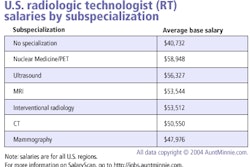
Building a strategic marketing plan incorporates four fundamental steps and involves the entire staff.
First, a market assessment establishes the groundwork for constructing a plan. Second, the planning team must formalize a strategy, develop clear objectives, and construct the document. Third, once the plan has been formalized, team members implement and execute the objectives. Last, outcomes must be monitored and measured in order to assess whether or not objectives were accomplished.
Developing an effective tool for managing a successful healthcare organization requires commitment and thoroughness in each component of the planning process.
Data mining
Understanding the market is a key ingredient to overall success. This includes an overview of the macro-environment. Global, state, and local healthcare issues may have implications for business growth. Anticipate future changes by keeping abreast of the current dynamics of the industry.
Professional organizations keep members informed on the payor environment, legislation, innovations in healthcare, the economy, and healthcare consumer trends. The Internet is also a vast resource for industry-related weekly newsletters or Web sites with information on current healthcare events. Bookmark sites for easy access.
Fortunately for us, a medical practice’s information system is rich with data, perfect for segmenting and profiling current customers. Identify who all of your customers are. Track trends very closely until predictive information is available for key segments (for example, patients, payors, and referral sources).
Additional profiling elements include demographics, sociographics, geographic profiling, level of education, income levels, and growth potential in targeted geographic area(s). Healthcare providers also have the ability to talk to their customers (such as the referring physicians/staff and patients) regularly. Train staff to ask key questions to acquire vital information about service delivery.
When visiting a referring office, be astute and look for opportunities that will direct future referrals to your facility. Find out what the deciding factor is for their referrals. You will find that information is well within reach.
Analysis
Another key component of the market assessment is the competitive analysis. Know the competition. Perform a strengths, weaknesses, opportunities, and threats (SWOT) analysis to identify these items in your company and compare these to the competition. This exercise helps pinpoint unique qualities of your business, which in turn answers the question of how to position your services. Know how competitors position themselves. The key is to differentiate one’s practice from the competitors and not mimic a competitor’s business. Set yourself apart!
The marketing assessment acts as the basis for defining objectives and defining strategies in the next phase of the planning process. At this stage, tactics are also constructed for accomplishing objectives. This should involve those individuals that will be responsible for carrying out the plan. A strategic marketing plan should include the following key components:
Research
Understand the macro environment, customer(s) and competitors. What are key issues affecting new growth opportunities?
Positioning
List the attributes of your business. What image do you want to project? Define the value and benefits that your patients will receive if they use your facility. Should they look forward to the latest technology combined with highly trained specialists, or is the practice all about service and a personalized touch? If contractual relationships are the driving force of your market, find out what insurers want for their network participants.
Strategies and objectives
Strategies provide a broad direction to achieve specific objectives. Make sure the objectives are quantifiable. This will be critical to determine the business’ success and return on investment (ROI).
Tactical program (implementation)
There should be two major components of the tactical program. One is providing an excellent product or service. The second component is marketing the product.
First, ensure that operations are technically superior and customer service is expedient and caring. Inevitably, excellent service is the cornerstone for consumer loyalty in our industry. Workflow and processes should be scrutinized to ensure that your staff is able to exceed customer expectations.
Second, the business needs to communicate its attributes in a powerful and succinct message to its target audience. The key is to engage the customer. Promotion, advertising, and public relations are all vehicles that are used to communicate the message. Staff input is critical in this stage to ensure that internal operations support claims made in the marketing communications.
Create a tactical agenda to carry out each objective. Assign responsibilities and reasonable timelines. Internal communication with the staff will be integral for a more informed and contented workforce. The essence of an effective plan is the staff’s contribution to its success.
Customer relations, advertising and promotion, public relations, and education for the internal staff and external market are components of the tactical program. Much of healthcare advertising comes in the form of education. Informative advertising can be presented by various methods such as media, brochures, direct marketing, public relations, or informative ads.
Physicians or staff members can elect to speak at health functions, serve on key advisory boards for non-profit organizations, or write articles for a newspaper or public health journals. Awareness is created over time and with frequency. An individual must hear and see a message several times to ingrain it.
Good customer-relations programs are propagated by the staff through good customer service and operational efficiency. Spend time on workflow and providing adequate tools for the staff to serve the customer.
Budget projections
Develop the budget. Expenses and revenues generated from specific activities should be tracked closely. Again, staff should participate in the budget planning.
Outcomes assessment mechanism
Evaluate outcomes. Track improvement in referral activity in targeted areas. Talk to customers, either through one-on-one interviews or surveys. Perform a financial assessment to determine the ROI for each investment and overall plan. This will identify where objectives need to be reevaluated
Finally, how will outcomes be evaluated and measured? Each objective should have a correlating strategy for measuring outcome. Unfortunately, healthcare services are primarily used on an as-needed basis and are not typically as a response to an advertisement or promotional campaign.
Therefore, the healthcare industry presents a special set of circumstances for measuring response to advertising or promotions. Fortunately, tracking ROI in radiology is somewhat easier. Specific referral sources (physicians and payers) can be monitored after investing in a marketing effort. Management reports should also be reviewed for changes in referral activity.
Acquire information at the time of inquiry or scheduling to determine how the patient came to use your services. Unfortunately, there can be quite a lag for utilization of services versus onset of marketing. If direct mailers or promotional items are used, consider unique identifiers for tracking. Information can be achieved via response cards or feedback surveys and face-to-face interviews to determine if the inquiry or referral was in response to your marketing. Establish a reasonable timeline for measuring ROI.
Financial tracking
Financial measures will be the final determination. Calculate a return on investment for each category of the marketing plan as well as overall annual ROI. Identify all expenses for each objective and overall program. ROI is calculated using the following formula: (Revenues-Expenses/Expenses) x 100.
Calculation for a simple break-even point is: (Expenses/Return) x Time Period. Project this out over a period of time such as 3-5 years. This provides a more global overview of ROI. Keep in mind that expenses should include any line item that was involved specific to a particular area of the practice, such as women's imaging or virtual colonoscopy.
Secondly, net revenues should be used rather than gross charges. In healthcare, actual payments are far less than gross charges. Developing a break-even analysis on net payments will provide a more accurate picture of cash flow.
Following a systematic process leads to a well-developed plan that management and staff can use to enhance the practice’s growth. Formulating a strategic marketing plan based on sound research offers a dynamic tool that is responsive to the market. The process also brings staff together to participate in defining and developing direction for their business. Ultimately, the time and energy invested into each process will increase the potential for the continued success of the business.
By Elsa Ozuna-RichardsAuntMinnie.com contributing writer
May 14, 2004
REA Healthcare Strategies of Reno, NV, is a consulting firm focusing on healthcare marketing and practice management. It specializes in developing marketing programs for practices and vendors. It also has extensive experience in providing medical practices with strategic planning, project management, and customer-service training programs.
Related Reading
Making your practice known on the Web, December 23, 2002
Customer service begins at the top, November 22, 2002
Medical conferences bring market muscle to imaging center technology, November 5, 2002
Building a successful new imaging center program, October 8, 2002
Imaging center marketing: Don't trade dollars for doughnuts, September 18, 2002
Copyright © 2004 REA Healthcare Strategies



















